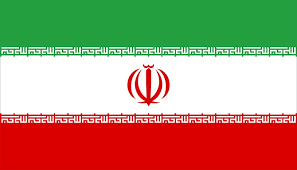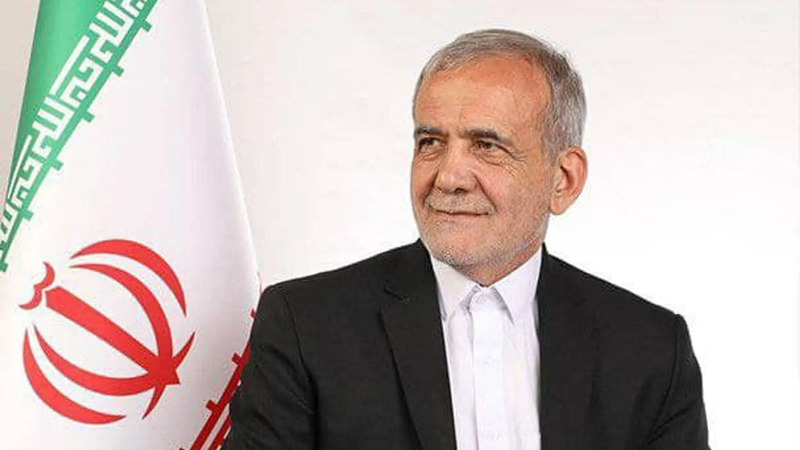Country Name: Iran
Country Flag:

Ancient Empires (3200 BC – 651 AD): Iran is home to the ancient Persian empire and boasts a rich history, consisting of periods like the Elamites, Medes, and Achaemenids. The Achaemenid Empire, founded by Cyrus the Great, became one of the largest empires in history, stretching from the Balkans to Egypt and India.
Islamic Conquest and Dynasties (651 AD – 1925 AD): The Arab conquest in the 7th century AD brought Islam to Iran. Over the centuries, various dynasties rose and fell, including the Abbasids, Seljuqs, Safavids, and Qajars, with the Safavids adopting Shia Islam as the country’s official religion in 1501.
20th Century Turmoil (1900s): The early 20th century saw Iran grapple with foreign influence, particularly from Britain and Russia. The Pahlavi dynasty came to power in 1925, implementing modernization reforms that faced popular discontent. The Anglo-Iranian oil dispute, nationalisation of oil, and the 1953 CIA and Mi6-backed coup further strained relations with the West.
1979 Islamic Revolution and the Islamic Republic: In 1979, a popular revolution led by Ayatollah Ruhollah Khomeini overthrew the Shah and established the Islamic Republic. The revolution reshaped Iran’s political landscape, prioritising Islamic principles.
Post-Revolution Iran (1979 – Present): The Islamic Republic has faced significant challenges: The Iran-Iraq War (1980-1988), US sanctions, internal political struggles, and social change movements. Iran has also developed nuclear capabilities, creating international tensions. The country continues to navigate its path as a regional power with a complex history and identity.
Tehran
(GMT+3:30)
Total area: 1,636,000 sq kilometres
Position in the world: 18
Arable Land: 14%
Arid Deserts: The vast central deserts of Iran, such as the Dasht-e Kavir and Dasht-e Lut, are arid and unforgiving, with scorching summers and minimal rainfall. Temperatures soar during the day, while nights bring a stark, cold contrast.
Mountainous Highlands: In the rugged Alborz and Zagros mountain ranges, the climate is varied and unpredictable. Summers are cool and pleasant, whereas winters bring heavy snowfall, supporting a range of flora and fauna unique to these highlands.
Casual Caspian Coastline: The lush northern coastline along the Caspian Sea enjoys a mild, humid climate. Warm summers and temperate winters, along with ample rainfall, support dense forests and fertile lands in this region.
Semi-Arid Plateau: The central Iranian plateau has a semi-arid climate, where hot, dry summers are followed by mild winters. Rainfall is scarce, but the seasonal shifts between heat and cool bring some respite to the region’s dry landscape.
Iran is divided into 31 provinces:
Earthquakes: Iran is situated on a number of significant fault lines, such as the Zagros Mountains fault system and the Alpine-Himalayan belt. Because of this, it is quite vulnerable to earthquakes.
Floods: The Zagros Mountains and the Caspian Sea area of Iran receive a lot of seasonal rainfall.
Draughts: Droughts are common in Iran since a sizable section of the country’s geography has an arid or semi-arid environment.
Dust Storms: Dust storms occur often due to a combination of windy and dry weather and desertification, especially in central and eastern Iran.
Iran claims a 12-nautical mile territorial sea followed by a contiguous zone for enforcement purposes, and an Exclusive Economic Zone extending 200 nautical miles from its coastline granting it exclusive rights to manage resources.
Power Structure: Iran operates as an Islamic Republic with a unique blend of theocratic and democratic elements. The Supreme Leader, who holds the highest authority, oversees the judiciary, military, and key policy decisions. Beneath him, the President serves as the head of government, managing day-to-day administrative matters. Iran’s parliament, the Islamic Consultative Assembly, is responsible for passing laws, though these must align with Islamic principles and are overseen by the Guardian Council.
Political Plurality: Iran’s political landscape is defined by a mix of conservative, reformist, and moderate factions, each vying for influence within the system. While candidates are vetted by the Guardian Council, limiting open political pluralism, elected officials and factions within the government often represent a range of views on domestic and foreign policy. Although conservatives typically hold substantial power, reformist and moderate voices sometimes make significant gains, especially in parliamentary and presidential elections.
Supreme Leader’s Authority: The Supreme Leader wields significant authority in Iran’s political system, with control over major state institutions, including the military and judiciary. Appointed for life by the Assembly of Experts, the Supreme Leader has the power to veto legislation, declare war, and dismiss the President if necessary, ensuring substantial influence over both political and social matters.
Regional Autonomy: While Iran is centralised, it allows limited local governance in its provinces, especially in areas with unique ethnic compositions, such as the Kurdish and Baluchi regions. Provincial governors are appointed by the Ministry of Interior, ensuring the central government maintains influence over local affairs, though some autonomy exists in cultural and economic matters.
Political Ideologies: Iran’s political ideology is deeply rooted in the principles of the Islamic Revolution. The idea of ولاية فقيه (wilayat al-faqih), which translates to “guardianship of the jurist,” is emphasised in the political systems ideology. The basic tenet is that a jurist (legal scholar) must be the head of state because they have the divine authority to rule and guarantee that Shi’i Islamic law is followed across the country.with conservatism playing a dominant role. Conservative factions prioritise religious adherence, national security, and resistance to Western influence. Reformist factions, though often constrained, advocate for increased political freedoms, economic reform, and improved international relations. This ideological diversity contributes to a complex political environment where different views within the system compete to shape Iran’s future.
Allies
Iran’s territory and strategic geopolitical importance position it as a major regional player on the global stage. Let’s explore its geopolitical landscape through the lens of neighbouring countries, regional partnerships and key allies.
Proxy Allies
Iran intentionally expands its influence in the Middle East by supporting proxy militants around the area. These allies include the politically and militarily formidable Hezbollah in Lebanon as well as a number of Shiite militias in Iraq, including the Popular Mobilisation Forces. Iran also backs the Houthi rebels in Yemen, giving them political and military support as they fight the Yemeni government and its coalition partners led by Saudi Arabia, as well as the Palestinian resistance by supporting Hamas.
Some Major International Allies
China: Top oil buyer and strategic ally. Cooperation spans economics, diplomacy, and military areas.
Russia: Strong partnership in defence, energy, and regional politics. Mutual support against Western influence and for Middle Eastern stability.
India: Longstanding ties built on history, culture, and economic interests. Collaboration in trade, energy, infrastructure, and security. India invests in Iranian ports for better regional connectivity.
South Africa: Supporters during South Africa’s Apartheid struggle. Growing cooperation in trade, energy, and agriculture. South Africa acts as a mediator for regional peace and security.
Government Type:
Iran has a theocracy with elements of democracy with a Supreme Leader as the highest level of authority.
Supreme Leader:
Ayatollah Ali Khamenei (1989 – Present)

President:
Masoud Pezeshkian (2024 – Present)

Top 3 Political parties and their ideology influence:
Elections: 2028
Upcoming Elections: June 2024 (As a result of President Raisi’s untimely passing)
Look East: The policy of Look East is a strategic reaction to a multifaceted global landscape. It aims to reduce the power of the West, promote growth, and form new alliances, especially with nations in the East and the South.
Size in the world: 36th
GDP: $417.98 Billion
GDP per capita: $5 400 USD
Currency: Iranian Rial (IRR ﷼)
Dominant Economic Sector: Services
Economy Type: Mixed Economy
Imports:
Exports:
Social Landscape
Population: 89 683 390 million
Position: Rural / Urban distribution
Urban: 74%
Rural: 36%
Gini Coefficient:
40.9 (where 0 = perfect inequality and 100 = perfect equality)
Language
Official Language: Persian/Farsi
Other languages: Kurdish, Turkic, Luri, Gilaki, Mazandarani, Balochi, Arabic, English
Religion
Dominant Religion: Twelver Shia Islam
Other religions: Christianity, Judaism, Zoroastrianism